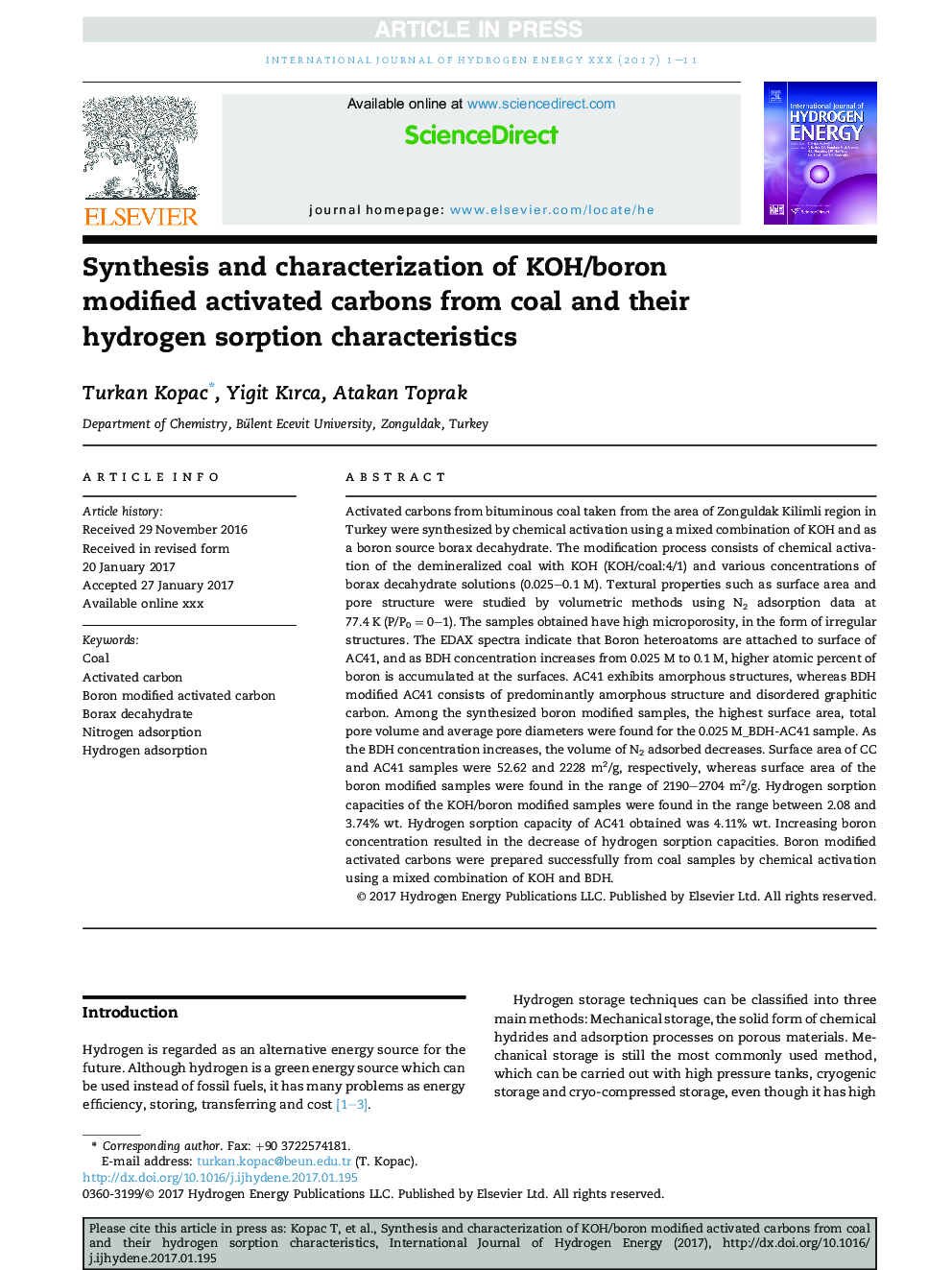| Article ID | Journal | Published Year | Pages | File Type |
|---|---|---|---|---|
| 5145530 | International Journal of Hydrogen Energy | 2017 | 11 Pages |
Abstract
Activated carbons from bituminous coal taken from the area of Zonguldak Kilimli region in Turkey were synthesized by chemical activation using a mixed combination of KOH and as a boron source borax decahydrate. The modification process consists of chemical activation of the demineralized coal with KOH (KOH/coal:4/1) and various concentrations of borax decahydrate solutions (0.025-0.1Â M). Textural properties such as surface area and pore structure were studied by volumetric methods using N2 adsorption data at 77.4Â KÂ (P/P0Â =Â 0-1). The samples obtained have high microporosity, in the form of irregular structures. The EDAX spectra indicate that Boron heteroatoms are attached to surface of AC41, and as BDH concentration increases from 0.025Â M to 0.1Â M, higher atomic percent of boron is accumulated at the surfaces. AC41 exhibits amorphous structures, whereas BDH modified AC41 consists of predominantly amorphous structure and disordered graphitic carbon. Among the synthesized boron modified samples, the highest surface area, total pore volume and average pore diameters were found for the 0.025Â M_BDH-AC41 sample. As the BDH concentration increases, the volume of N2 adsorbed decreases. Surface area of CC and AC41 samples were 52.62 and 2228Â m2/g, respectively, whereas surface area of the boron modified samples were found in the range of 2190-2704Â m2/g. Hydrogen sorption capacities of the KOH/boron modified samples were found in the range between 2.08 and 3.74%Â wt. Hydrogen sorption capacity of AC41 obtained was 4.11%Â wt. Increasing boron concentration resulted in the decrease of hydrogen sorption capacities. Boron modified activated carbons were prepared successfully from coal samples by chemical activation using a mixed combination of KOH and BDH.
Related Topics
Physical Sciences and Engineering
Chemistry
Electrochemistry
Authors
Turkan Kopac, Yigit Kırca, Atakan Toprak,
